News Articles
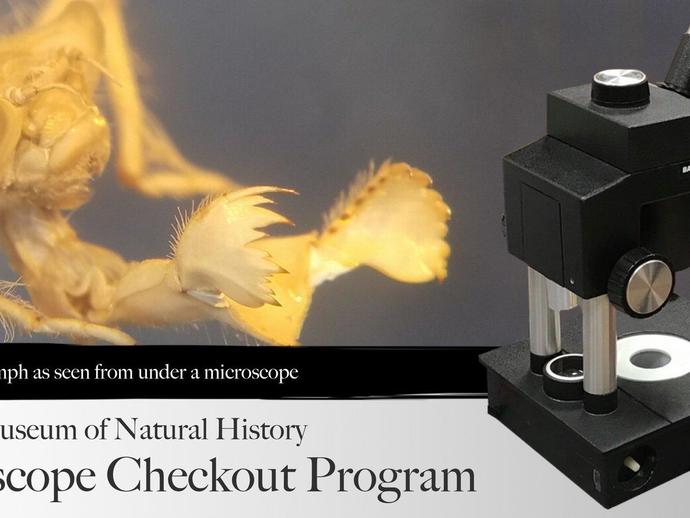
Viewing specimens under a microscope provides a brand new perspective of the natural world!
November 30, 2020
Viewing specimens under a microscope provides a brand new perspective of the natural world! Now, the museum is offering a free microscope checkout program available to any individual or family who wants to explore the natural world at a microscopic level! A limited number of microscopes are available on a first-come, first-served basis and are available for checkout for a period of one week! Reservations can be made at the museum box office Fridays and Saturdays from 9 a.m. to 5 p.m. or by emailing us at information@vmnh.virginia.gov. If you are requesting to reserve microscopes via email, simply let us know your name, the number of microscopes you would like to reserve (1-12), and the date you are requesting to pick-up ...
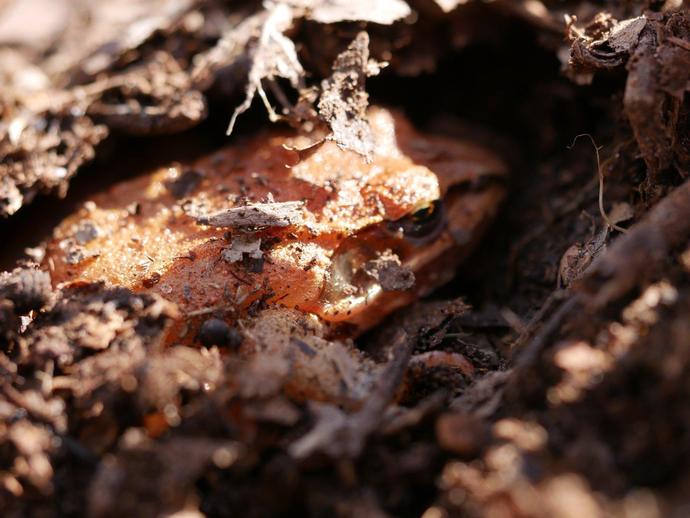
Ben here with the first #BenInNature of this week!
November 30, 2020
Ben here with the first #BenInNature of this week! We see toads all the time in the spring and summer, but once the weather starts getting cold, they all seem to disappear. They haven't taken a road trip to Florida; they're still around, just buried in the soil! Toads are one of many animals that hibernate during the winter. When animals hibernate, they lower their metabolism, which allows them to use very little energy. They stop moving, and their heart rate and body temperature drop drastically. Toads have special knobs on their hind feet that help them dig into the soil, and in some areas they'll dig down more than 20 inches to find the perfect depth for hibernation. This is because they need to stay below the frost ...
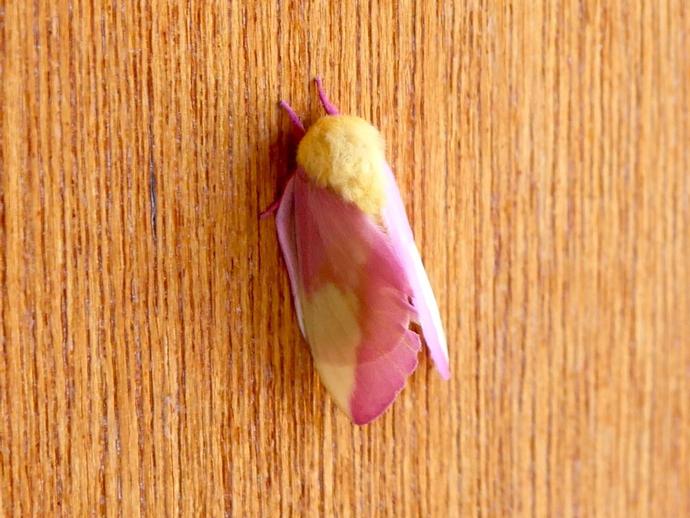
We're reaching into the archives for today's #BenInNature update!
November 29, 2020
We're reaching into the archives for today's #BenInNature update! The following post was originally published on April 20, 2020. Everyone loves butterflies, but moths often don't get the respect they deserve. Sure, a lot of moths are kind of drab, but there are plenty of beautiful moths out there, too. Case in point: Dryocampa rubicunda, also known as the rosy maple moth. This moth belongs to the family Saturniidae -- the great silk moths -- which includes some of the largest moths in the world. The rosy maple moth definitely isn't a giant, but its fuzzy pastel coloration makes it a striking sight nonetheless. As the common name suggests, the caterpillars of these moths prefer to feed on the leaves of maple trees. While ...
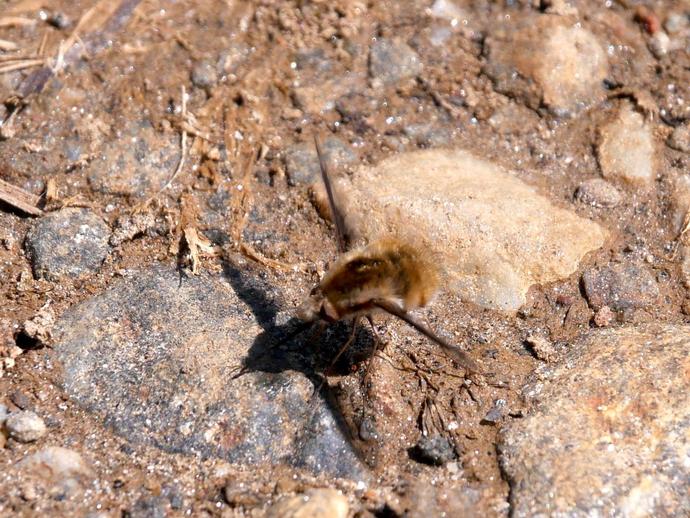
We're reaching into the archives for today's #BenInNature update!
November 28, 2020
We're reaching into the archives for today's #BenInNature update! The following post was originally published on April 19, 2020. With its cute fuzzy abdomen, you could easily mistake this fellow for a friendly bumblebee; however, it's all a clever ruse! This is Bombylius major, also known as the large bee fly, and as the name suggests, it's actually a fly in disguise. An easy way to tell that they're flies instead of bees is that they only have one pair of wings as opposed to two. Bee flies don't bite, sting, or spread disease, and they're important generalist pollinators. In addition to being found in North America, this species can also be found in Europe and parts of Asia. Bee flies have likely evolved to resemble ...
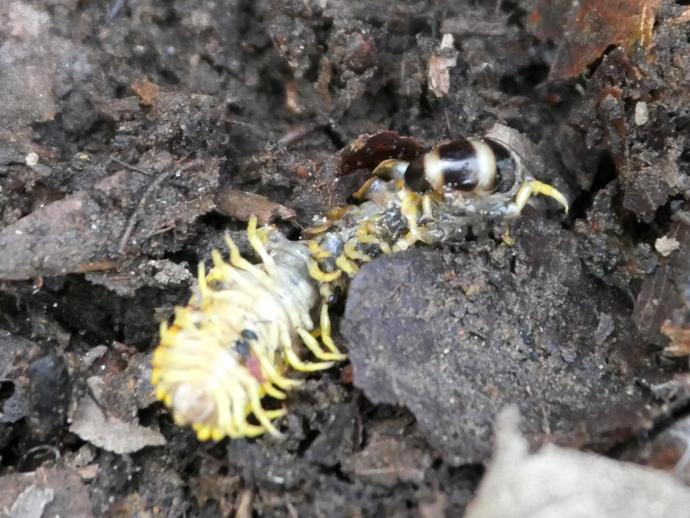
We're reaching into the archives for today's #BenInNature update!
November 27, 2020
We're reaching into the archives for today's #BenInNature update! The following post was originally published on April 18, 2020. Today's nature update is something pretty cool (and gross!) that you don't see every day. It's also a two-for-one. Here we see two different insects: the yellow thing is a millipede that is having a sincerely bad day, and the shiny black thing that's where the millipede's head should be is a Phengodes larva. Phengodes is an extremely interesting genus of beetles. They belong to the beetle family Phengogidae, which are known as the "glow-worm beetles." The beetle larvae are bioluminescent, meaning that they glow in the dark! Phengodes larvae and larviform females (the females of this family still ...
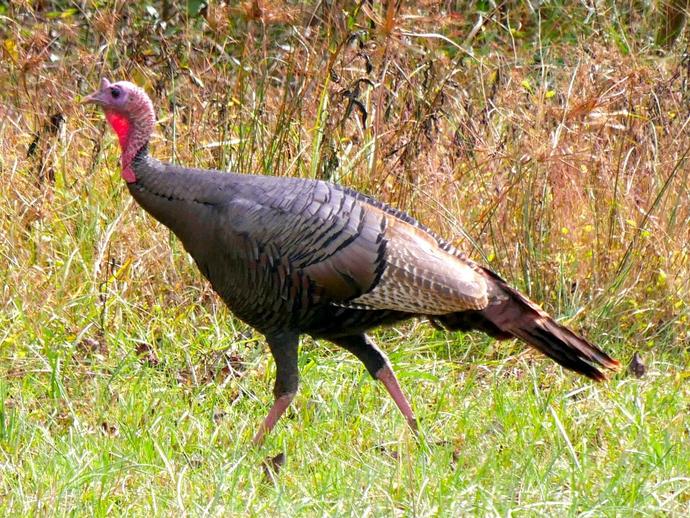
Happy Thanksgiving!
November 26, 2020
Happy Thanksgiving! What better way to celebrate than by taking a look at this female Eastern wild turkey (Meleagris gallopavo silvestris)? This subspecies of the wild turkey is the most common and wide-ranging of the six wild turkey subspecies in the U.S., and they're always an exciting sight! Believe it or not, the domesticated turkey on your table this evening belongs to the same species as the wild turkey. The majority of domesticated turkeys are bred to have white feathers because it makes their tiny pin feathers less visible when the turkey is dressed and ready to go in the oven (bon appétit!). While wild turkeys aren't an uncommon sight in southwest Virginia, that wasn't always the case. When the Europeans ...
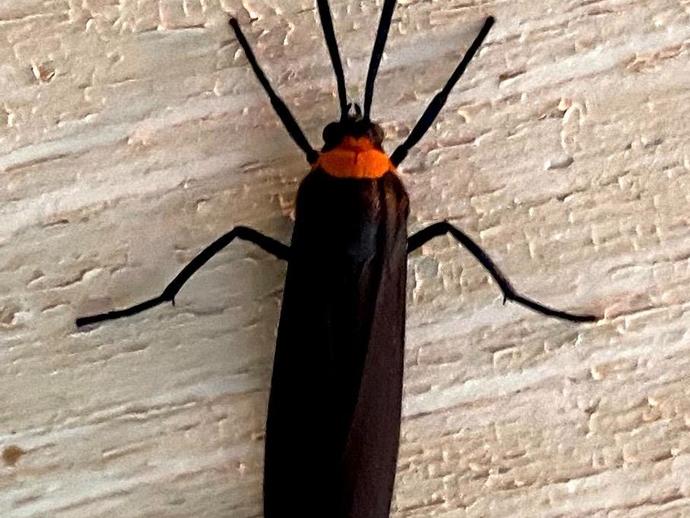
Ben here with the Wednesday edition of #BenInNature!
November 25, 2020
Ben here with the Wednesday edition of #BenInNature! The yellow-collared scape moth (Cisseps fulvicollis) is an oddly-named little moth considering that its collar is usually bright orange, not yellow. It was described by entomologist Jacob Hübner in 1818, although I can't find anything online regarding whether or not he was colorblind. This moth can be found throughout much of the U.S. and even into Canada, and it's fairly common within its range, especially in the southeastern U.S. When its wings are raised, they reveal an abdomen that's a metallic blue color; it could almost be mistaken for a wasp! These moths are active during the day in late spring and summer and serve as important pollinators. Some of their ...
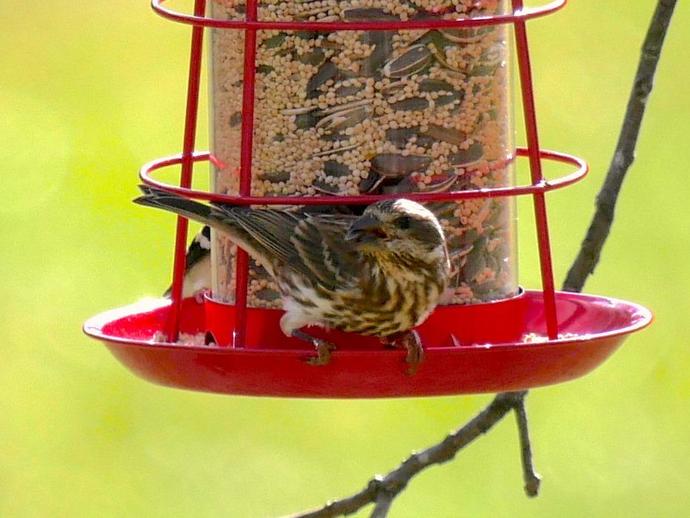
Ben here with today's #BenInNature update!
November 24, 2020
Ben here with today's #BenInNature update! This is Haemorhous purpureus, better known as the purple finch! Upon seeing this photo, you're probably thinking, "Well, it doesn't look all that purple to me." That's because this particular purple finch is a female! Like many birds, the males tend to be brightly colored while the females have duller coloration. I'll share a photo of a male purple finch as soon as I snap a good one! During the breeding season, purple finches are generally found in Canada, although there are a few stretches along the west coast of the U.S. and in the northern part of the U.S. where they can be found year-round. In southwest Virginia, purple finches are migratory birds that visit us in the late ...
Assistant Curator of Paleontology Dr
November 23, 2020
Assistant Curator of Paleontology Dr. Adam Pritchard is back inside the paleo collections to put the spotlight on fossil sawfish in this latest episode of "Tales of Ancient Life"!
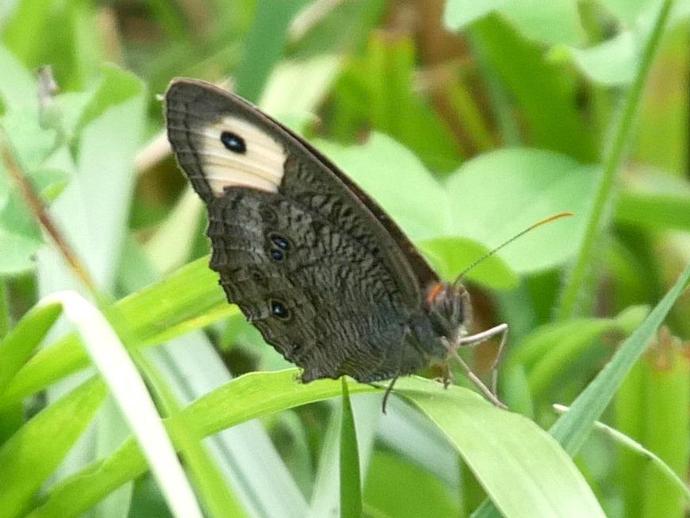
It's time for the Monday edition of #BenInNature!
November 23, 2020
It's time for the Monday edition of #BenInNature! Fall is here and winter is fast approaching, which sadly means that my beloved insects are going to be few and far between for the next few months. Fortunately, I still have a few in my backlog, such as Cercyonis pegala, the common wood-nymph! Also referred to as the blue-eyed greyling and the goggle-eye, this butterfly belongs to the family Nymphalidae, the largest butterfly family, with more than 6,000 species worldwide. These butterflies can be found throughout most of the U.S. and into southern Canada. They're commonly found at the edges of forests and in fields and meadows, and they're usually on the wing from mid-May through October in Virginia. While many butterflies ...
In this episode of "Museum Minute" ...
November 22, 2020
In this episode of "Museum Minute", VMNH Educator Terri Robertson highlights the museum's resident Red-eared slider, Speedy, which can be found inside the museum's Suzanne M. Lacy Education Center!
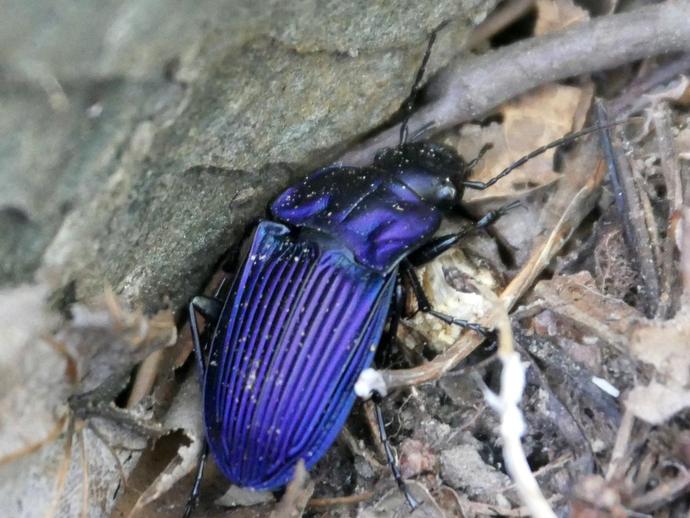
We're reaching into the archives for today's #BenInNature update!
November 22, 2020
We're reaching into the archives for today's #BenInNature update! The following post was originally published on April 17, 2020. With its brilliant purple elytra (the shell that covers the flight wings), this beetle almost looks like something you'd find in the tropics, but you can find them right out in the woods in southwest Virginia! According to Virginia Museum of Natural History Research Associate and Professional Beetle Expert Curt Harden, this fellow is Dicaelus purpuratus. It's active from the spring through the fall, and it likes to hide in leaf litter and under logs. These beetles are snail-eaters, and it's probably no coincidence that on the same day I found two of these beetles, I found a couple of empty snail ...
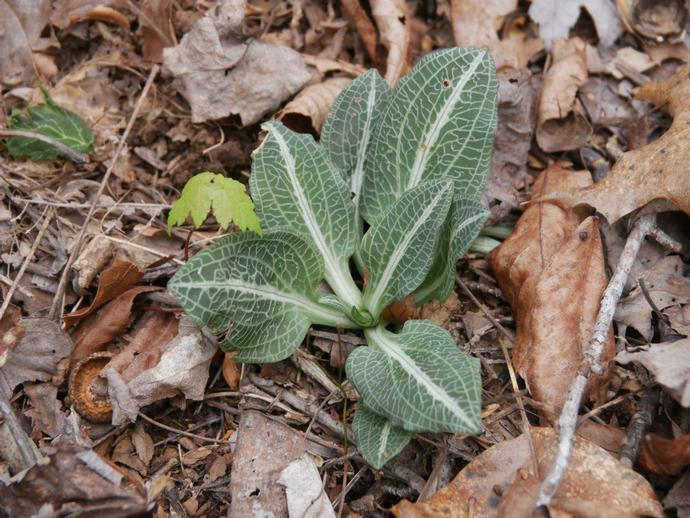
We're reaching into the archives for today's #BenInNature update!
November 21, 2020
We're reaching into the archives for today's #BenInNature update! The following post was originally published on April 16, 2020. When we think of orchids, we usually think of rare, ornate flowers growing from a tree in a misty swamp somewhere. In fact, there are a number of species of orchids you can find out in the woods right here in southwest Virginia! For the most part, the orchids you'll find locally aren't nearly as showy as the orchids you would buy from a nursery (with the exception of Cypripedium acaule, better known as the pink lady's slipper, which I am on a mission to find). The pictured orchid is an excellent example of one of our more common, less showy orchids. This is Goodyera pubescens, commonly known ...
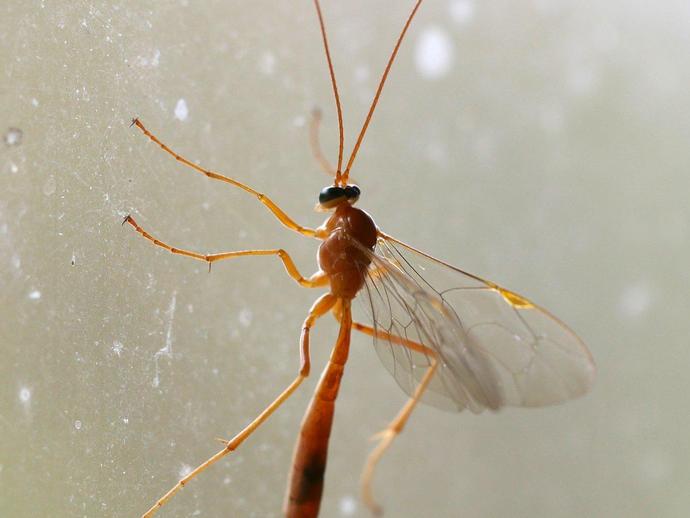
It's time for the Friday edition of #BenInNature!
November 20, 2020
It's time for the Friday edition of #BenInNature! It's always amusing to me (in a deeply frustrating way) to see how the media often covers insects. A handful of Asian giant hornets are found in the Pacific Northwest and headlines suddenly scream that "murder hornets" are invading the U.S. A few venomous puss caterpillars are found in Virginia -- which is within their range -- and you see headlines about these horrible caterpillars "suddenly" appearing in Virginia. And when I was looking up information on this ichneumon wasp, which belongs to the genus Netelia, one of the first links I found was a news story proclaiming that "Zombie bugs invade region," which ends with a quote from a lady saying that she hopes the wasps ...
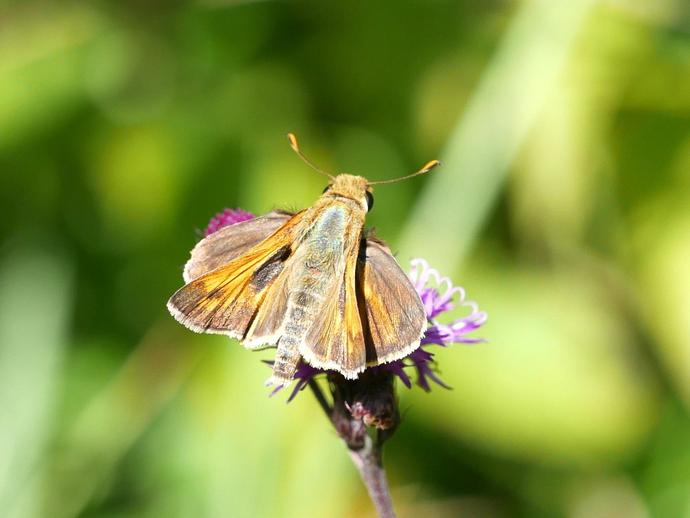
Ben here with the Thursday edition of #BenInNature!
November 19, 2020
Ben here with the Thursday edition of #BenInNature! This is a sachem (Atalopedes campestris), which is a small member of the subfamily Hesperiinae, also known as the grass skippers. It can be found in the southern U.S. down into Mexico and Central and South America. While the sachem was once fairly uncommon in the northern parts of the U.S., its range has expanded northward pretty rapidly just over the last two decades. Unfortunately, scientists believe this has nothing to do with the sachem suddenly deciding it likes the cold; instead, it's yet another insect that is able to expand its range northward due to climate change. On a more positive note, if you like to maintain a lawn, the sachem can be a great ally! This ...
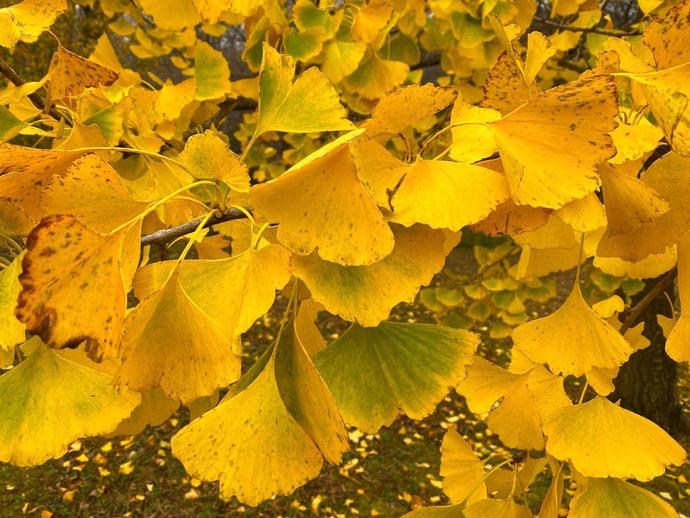
It's time for another #BenInNature update!
November 18, 2020
It's time for another #BenInNature update! My grandparents planted this ginkgo tree (Ginkgo biloba) behind their house more than 40 years ago. While ginkgo is not native to the U.S., it is a tree with a fascinating history! Ginkgo biloba is not just the only living tree in its genus; it's the only living tree in its order! Without going into too much (truly fascinating) detail about plant taxonomy, this means that the ginkgo tree is one-of-a-kind. It's also a so-called "living fossil." Ginkgo biloba and other trees within the Ginkgo genus were once found throughout the world, but over time, the number of species and their range began to shrink. By two million years ago, there was just one species, and it was restricted to ...
Curator of Mammalogy Dr
November 17, 2020
Curator of Mammalogy Dr. Nancy Moncrief was live at the historic Wayne Theatre Tuesday evening to present "Mountaintop Treasures: Exhibits Planned for VMNH - Waynesboro and The Southern Appalachians as a Hotspot for Biodiversity"!
Join VMNH Curator of Mammalogy Dr
November 17, 2020
Join VMNH Curator of Mammalogy Dr. Nancy Moncrief at the historic Wayne Theatre this evening at 7pm, as she presents "Mountaintop Treasures: Exhibits Planned for VMNH - Waynesboro and The Southern Appalachians as a Hotspot for Biodiversity"! Can't make it to the theatre? We've got you covered! The event will also be streamed live on the museum's Facebook page, as well as the Wayne Theatre's Facebook page!
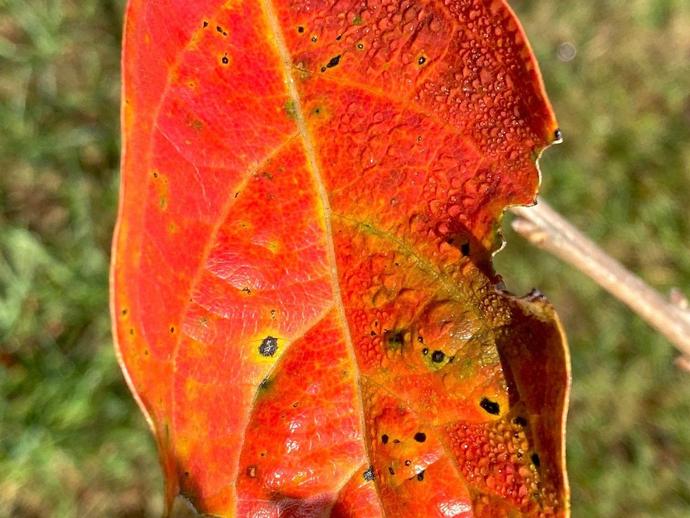
Ben here with today's edition of #BenInNature!
November 17, 2020
Ben here with today's edition of #BenInNature! Here's a picture of a leaf from the persimmon tree I planted in my backyard this past spring. We all know that the leaves of most deciduous trees change color in the fall (we're especially aware of it when we're trying to get somewhere and a leaf peeper in the car in front of us is running about 20 miles per hour). But WHY do leaves change color? Trees get energy by producing the green pigment chlorophyll, which absorbs energy from sunlight and uses it to convert carbon dioxide and water into carbohydrates. However, chlorophyll isn't the only pigment in tree leaves; many tree leaves also contain xanthophylls, which are yellow pigments; carotenoids, which are orange pigments; ...
In lieu of the usual #BenInNature update ...
November 16, 2020
In lieu of the usual #BenInNature update, VMNH Administrator of Science Ben Williams is answering a question today from curious youngster, Greyson, who wants to know: Can praying mantises fly?

Assistant Curator of Archaeology Dr
November 15, 2020
Assistant Curator of Archaeology Dr. Hayden Bassett presented "Prehistoric Settlements along the Smith River" this afternoon at the Martinsville-Henry County Heritage Center & Museum in Uptown Martinsville. Dr. Bassett, who grew up in the local area, has studied its prehistoric settlements for much of his life and it continues to be a part of his research efforts as assistant curator.
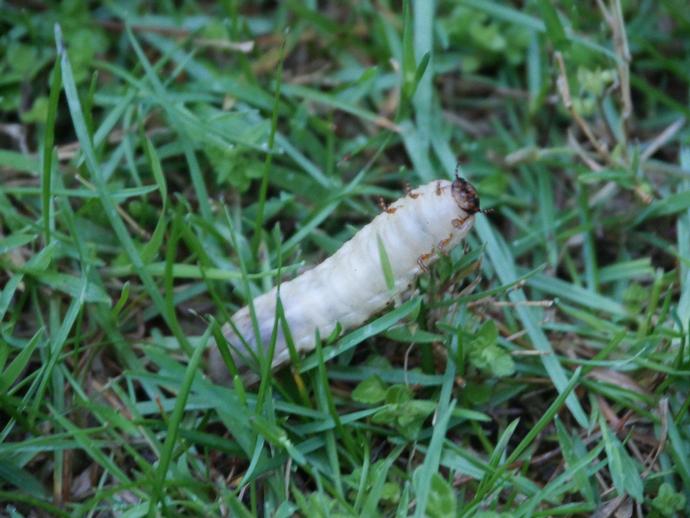
We're reaching into the archives for today's #BenInNature update!
November 15, 2020
We're reaching into the archives for today's #BenInNature update! The following post was originally published on April 15, 2020. Immediately following the recent heavy storms, I was poking around in my yard and spotted this large beetle grub doing its best impression of Andy Dufresne after escaping from prison in "The Shawshank Redemption." Beetle grubs generally live in the topsoil where they eat the roots of plants. This poor fellow came topside so it wouldn't drown in the sodden earth. Because beetle larvae eat plant roots, they are generally considered a major lawn pest. If your yard has a large population of beetle grubs, you might even find yellow patches of grass that can be rolled back like a carpet. But which ...
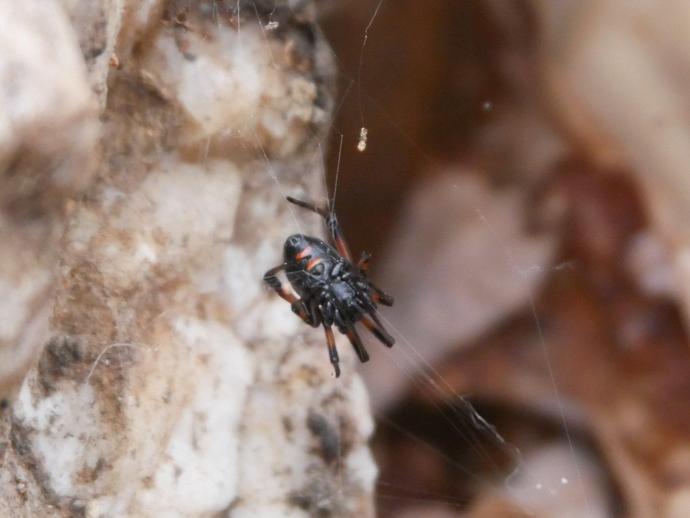
We're reaching into the archives for today's #BenInNature update!
November 14, 2020
We're reaching into the archives for today's #BenInNature update! The following post was originally published on April 14, 2020. This is Latrodectus mactans, better known as southern black widow. According to VMNH Associate Curator of Entomology Dr. Kal Ivanov, the red bands on the legs suggest this one is an immature female; when she reaches maturity, the legs will be solid black. When most people hear the name "black widow spider," it conjures up an image of a massive spider with inch-long fangs dripping with deadly venom, positioned directly beneath a handlebar mustache and top hat (which are obviously the universally-recognized indicators of evil). While getting bitten by a southern black widow isn't a pleasant ...
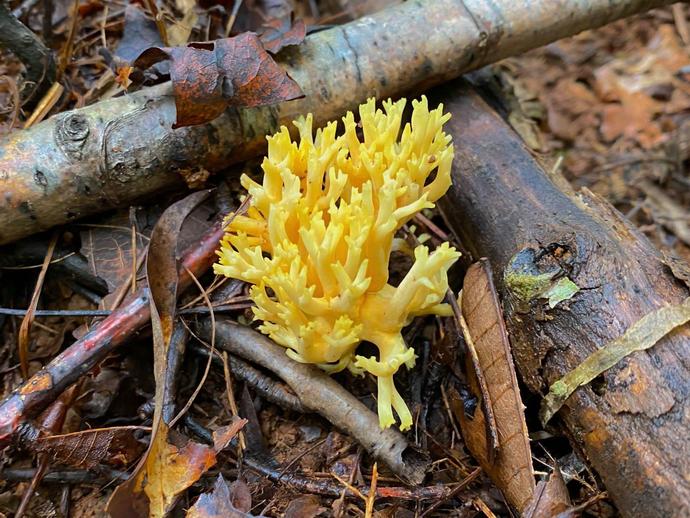
Ben here with Friday's #BenInNature update!
November 13, 2020
Ben here with Friday's #BenInNature update! When I first began noticing this strange fungus on my property, I thought to myself, "I wonder what that fungus is that looks like a coral." As it turns out, it's a coral fungus! Coral fungi, also called clavarioid fungi, are generally studied as an informal group. It was originally believed that they all belonged to the same genus (Clavaria), but it turns out that even though many of them look quite similar, they aren't closely related. As I've mentioned before, I don't post a lot of fungi for the same reason I don't eat wild fungi: they can be really difficult to identify! What coral fungi do have in common is that they produce simple or branching fruiting bodies and their ...
In this episode of "Museum Minute" ...
November 12, 2020
In this episode of "Museum Minute", VMNH Educator Terri Robertson is inside the museum's special exhibit gallery to highlight a puma display that is part of the "Wild About Cats" exhibit! SPECIAL OFFERING! Come join VMNH educators today (Friday, November 13) for a special display/activity table inside the museum's exhibit galleries featuring a variety of cat specimens! This special offering is included in the cost of general admission and is available anytime between 10 a.m. and noon, as well as 1 to 3 p.m. today! ABOUT MUSEUM MINUTE "Museum Minute" is a series of weekly videos produced by VMNH educators that highlights specimens and displays residing inside the museum's exhibit galleries.
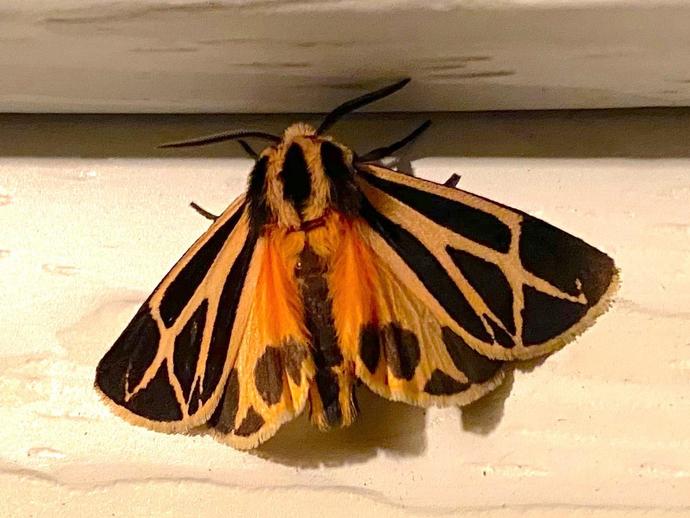
Ben here with today's #BenInNature update!
November 12, 2020
Ben here with today's #BenInNature update! Regular readers of these nature posts know that I'm a big fan of cool-looking moths, and the harnessed tiger moth (Apantesis phalerata) is a fine example! The harnessed tiger moth can be found throughout most of the eastern half of the U.S. and is fairly common within its range. In the south, the adults are usually on the wing from April through September. This one apparently didn't get the memo, however, as I found it on October 12, exactly one month ago today! These moths are members of the family Erebidae, which is one of the largest families of moths in the world -- in more ways than one. Not only does the family contain a large number of species, but it also includes some ...
Hey all you archaeology buffs! VMNH Assistant Curator of Archaeology Dr
November 11, 2020
Hey all you archaeology buffs! VMNH Assistant Curator of Archaeology Dr. Hayden Bassett will be presenting "Prehistoric Settlements along the Smith River" at the Martinsville-Henry County Heritage Center & Museum this Sunday at 3pm! The presentation is free to attend!
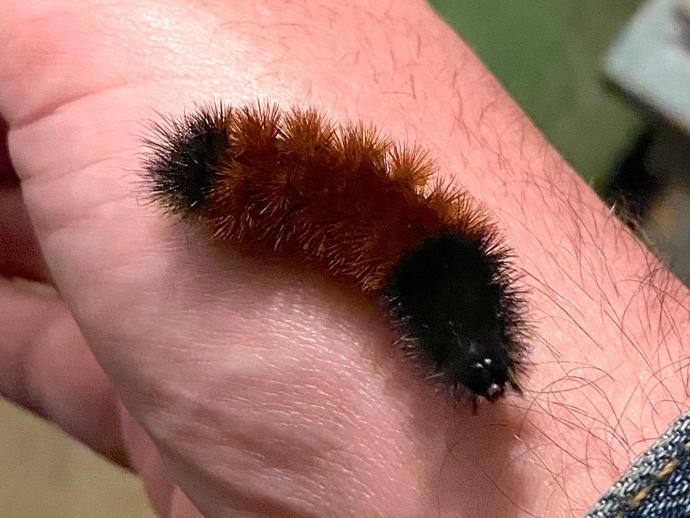
Ben here with the Wednesday edition of #BenInNature!
November 11, 2020
Ben here with the Wednesday edition of #BenInNature! As promised, today we're looking at the larval form of the isabella tiger moth (Pyrrharctia isabella), better known as the woolly bear or woolly worm! Even if you don't like bugs, you're probably a fan of these guys. In fact, a number of places in the U.S. hold annual woolly bear festivals! The nearest one is the Woolly Worm Festival held in Banner Elk, NC; sadly, it had to be cancelled this year due to the pandemic, but the organizers are planning on bringing it back next October. So why are these little guys so popular? In addition to being cute and fuzzy (and non-venomous, although the hairs can irritate people with sensitive skin), woolly bear caterpillars are said ...
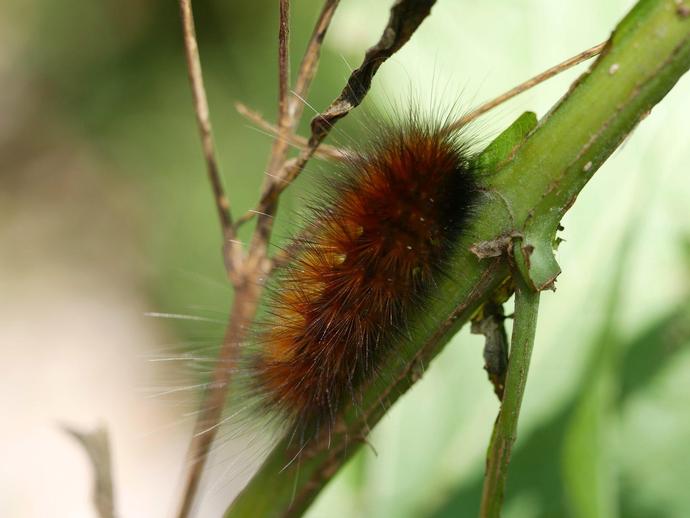
It's time for another #BenInNature update!
November 10, 2020
It's time for another #BenInNature update! When I found this little guy a month or so ago, I initially thought it was a woolly bear caterpillar. While the two are related (they're members of the same subfamily), this is actually the larvae of Spilosoma virginica, the Virginian tiger moth. The caterpillars are commonly referred to as "yellow woolly bear" or "yellow bear" caterpillars because they're often yellow in color, but they can also be brown like this one. Unlike the more familiar woolly bear caterpillars, however, they're generally consistent in their coloration; you won't find one that's half-yellow and half-brown, for example. These moths have two or three life cycles per year, and their caterpillars eat the ...
#BenInNature Trivia Challenge! You've seen the posts
November 9, 2020
#BenInNature Trivia Challenge! You've seen the posts. You've learned the facts. Now, it's time to prove you are a #BenInNature Mega Fan! The museum's education team has developed the #BenInNature Trivia Challenge to identify the most devoted fans out there! Everyone who successfully answers each trivia question correctly will be congratulated by having your own nature selfie posted to the museum's #BenInNature Mega Fan Photo Album on the official VMNH Facebook page! Click the link to learn more!
Join VMNH Curator of Mammalogy Dr
November 9, 2020
Join VMNH Curator of Mammalogy Dr. Nancy Moncrief at the historic Wayne Theatre on Tuesday, November 17 at 7pm, as she presents "Mountaintop Treasures: Exhibits Planned for VMNH - Waynesboro and The Southern Appalachains as a Hotspot for Biodiversity"! Can't make it to the theatre? We've got you covered! The event will also be streamed live on the museum's Facebook page, as well as the Wayne Theatre's Facebook page!
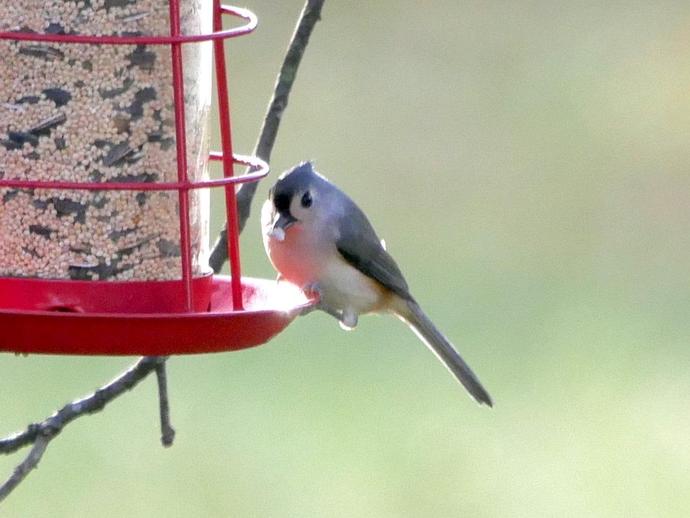
Ben here with the Monday edition of #BenInNature!
November 9, 2020
Ben here with the Monday edition of #BenInNature! The tufted titmouse (Baeolophus bicolor) is a lively little bird you're probably seeing at your feeder right now! These birds are members of the chickadee family (Paridae) and can be found year-round in the eastern half of the U.S. Much like other chickadees, tufted titmice don't always eat the seeds at your birdfeeder; many times, they'll take one seed at a time, fly it to food cache that's probably within about 100 feet of the feeder, shell the seed, and then hide it for later in the winter. If you'd like to attract them to your feeder, they prefer sunflower seeds but they'll eat many different kinds of seeds. For such a small bird, the tufted titmouse has a surprisingly ...
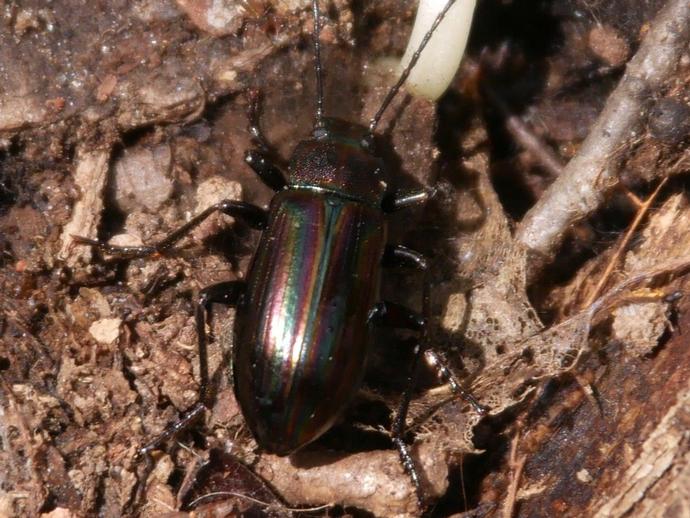
We're reaching into the archives for today's #BenInNature update!
November 8, 2020
We're reaching into the archives for today's #BenInNature update! The following post was originally published on April 13, 2020. This colorful little guy is Tarpela micans, a darkling beetle belonging to the family Tenebrionidae. According to VMNH Research Associate and Professional Beetle Enthusiast Curt Harden (who also identified this fellow for me), Tarpela micans feeds on lichen. The first thing that strikes you about this beetle, of course, is its metallic-looking rainbow-colored elytra (that's the hard shell that covers a beetle's flight wings). As is the case with many insects, these colors aren't solely created by pigments, but rather by complex, tiny structures on the beetle's exoskeleton that reflect light in ...
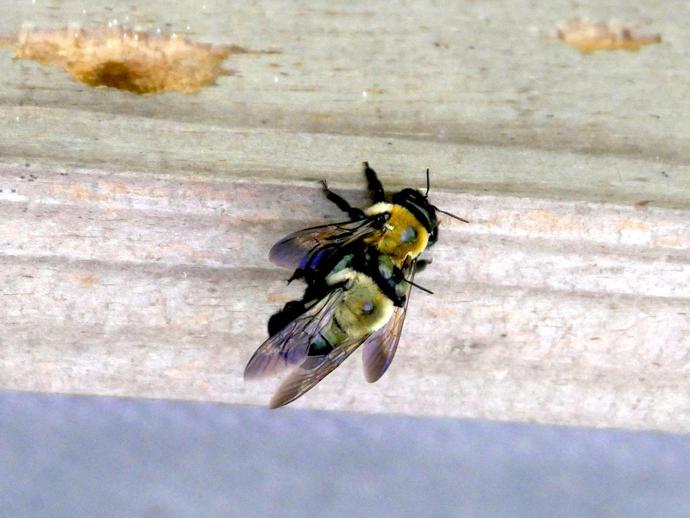
We're reaching into the archives for today's #BenInNature update!
November 7, 2020
We're reaching into the archives for today's #BenInNature update! The following post was originally published on April 12, 2020. Here we see two eastern carpenter bees (Xylocopa virginica), photographed in flagrante delicto. If you've ever wondered how to tell the difference between a carpenter bee and a bumble bee, it's actually pretty easy: Carpenter bees have shiny black abdomens, while bumble bee abdomens are covered in fuzz. Carpenter bees build their nests in wood, and they especially prefer milled pine and cedar lumber. The nests are either solitary or social, with either one female or several females nesting together. Carpenter bees have a loose social structure; if several females are nesting together, there ...

Bring your students to the museum without them ever having to leave their seats!
November 6, 2020
Bring your students to the museum without them ever having to leave their seats! Through the use of two-way video, your class will join museum educators as we explore Virginia's natural heritage and uncover its rich biological and geological history. Together, with the use of videoconferencing and interactive activities, we will spark imagination, enhance curricula, and support Virginia and national educational standards. Distance learning programs can be developed and adjusted to meet your needs. Education staff will work with you to establish your video conferencing connection in advance. Let us know how we can connect with you! Museum Distance Learning programs are available for public and private schools, after ...
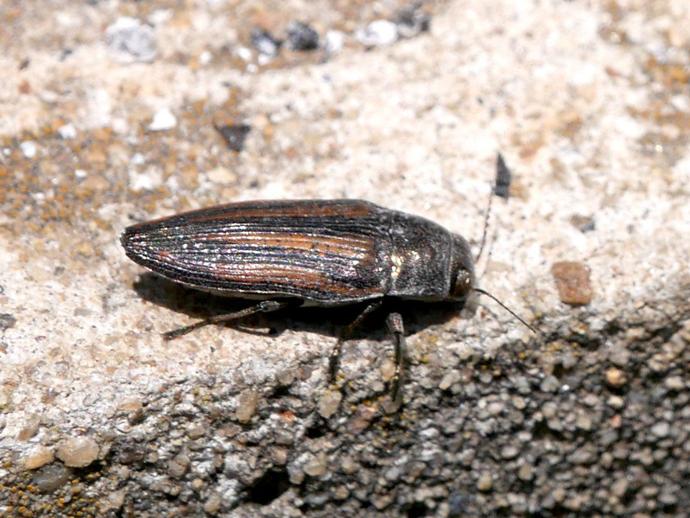
Ben here with today's #BenInNature update! This is Buprestis lineata, the lined buprestid beetle
November 6, 2020
Ben here with today's #BenInNature update! This is Buprestis lineata, the lined buprestid beetle. The family Buprestidae is one of the largest beetle families, containing more than 15,000 known species in 775 genera! What virtually all species of buprestid have in common is that their larvae bore into plants -- trees, shrubs, and even grasses -- and feed on sap. Many wood-boring species prefer dead or dying branches and don't present much danger to the host tree. However, a few of the wood-boring species prefer living trees and can do quite a bit of damage. The most famous of these is the invasive emerald ash borer (Agrilus planipennis), which is native to northeast Asia and has done a great deal of damage to ash trees in ...
In this episode of "Museum Minute" ...
November 5, 2020
In this episode of "Museum Minute", VMNH Educator Terri Robertson is inside the museum's special exhibit gallery to highlight a life-size cast skeleton of Triceratops, a dinosaur best known for its 3 horns, large frill, and parrot-like beak! SPECIAL OFFERING! Come join VMNH educators today (Friday, November 6) for a special display of dinosaur fossils inside the Harvest Foundation Hall of Ancient Life! Learn about adaptations, while observing the differences between carnivore and herbivore dinosaur teeth! Don't forget to guess what our mystery fossil is! This special display/activity is included in the cost of general admission and is available anytime between 10 a.m. and noon, as well as 1 to 3 p.m. today! ABOUT MUSEUM ...
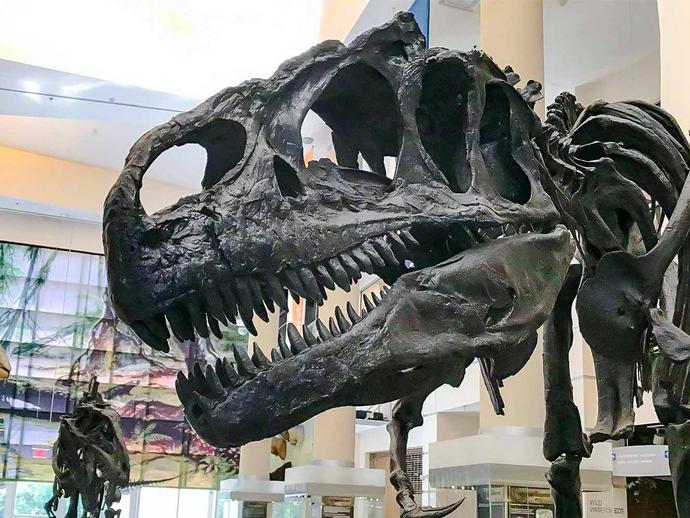
SPECIAL DISPLAY/ACTIVITY TOMORROW!
November 5, 2020
SPECIAL DISPLAY/ACTIVITY TOMORROW! Come join VMNH educators tomorrow (Friday, November 6) for a special display of dinosaur fossils inside the Harvest Foundation Hall of Ancient Life! Learn about adaptations, while observing the differences between carnivore and herbivore dinosaur teeth! Don't forget to guess what our mystery fossil is! This special display/activity is included in the cost of general admission and is available anytime between 10 a.m. and noon, as well as 1 to 3 p.m. tomorrow!
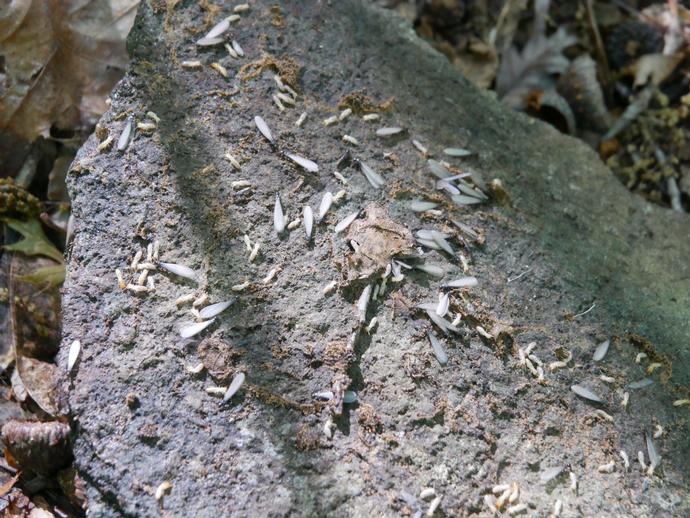
It's time for today's #BenInNature update!
November 5, 2020
It's time for today's #BenInNature update! Yesterday we looked at the eastern subterranean termite Reticulitermes flavipes, and today we're looking at them again -- although if you go back and look at yesterday's picture, you'll notice that these guys look pretty different! These termites are what are known as "alates," which means the winged reproductive caste of a social insect colony. Ants also produce alates, and if you're a wingless social insect that lives in a colony, alates provide a wonderful solution to a pretty serious problem: how do you create a new colony some distance from your own and continue your species when you're tiny and can't make it very far from your nest? The answer: sprout wings and flutter away! ...
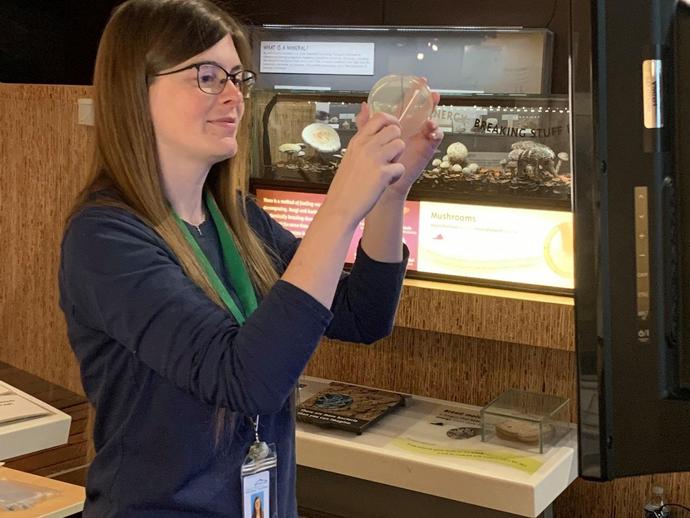
It was all about microorganisms during today's Virtual Homeschool Science & Engineering Academy ...
November 4, 2020
It was all about microorganisms during today's Virtual Homeschool Science & Engineering Academy sessions! Students didn't just learn about microorganisms...they swabbed areas around their own homes that they thought would have the most microbes and even set up an at home incubator to grow their own microbes! The Homeschool Science & Engineering Academy provides engaging science and engineering programs for homeschool students on the first and third Wednesday of each month throughout the school year. Due to the current health situation, this year's programming is being provided virtually. To learn more about the program and to register for upcoming sessions, visit www.vmnh.net/education/homeschool-education.
The museum has the privilege of interpreting ...
November 4, 2020
The museum has the privilege of interpreting, studying and disseminating information about Virginia's natural and cultural heritage and your VMNH Membership helps make that possible! Join or renew your membership online today! www.vmnh.net/membership
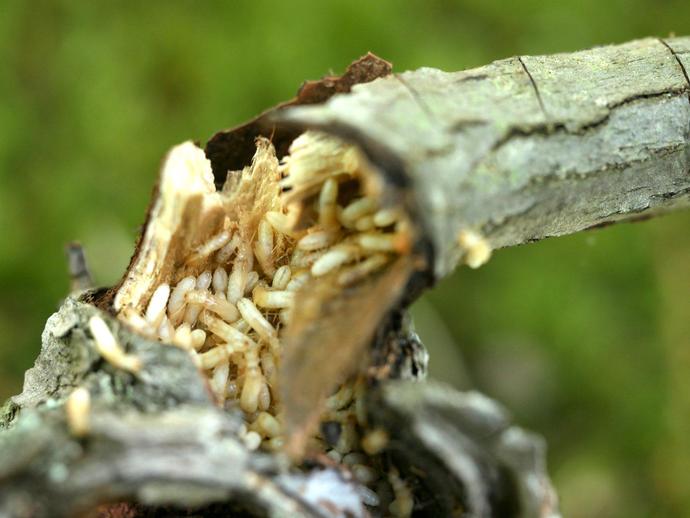
Ben here with today's #BenInNature update!
November 4, 2020
Ben here with today's #BenInNature update! The eastern subterranean termite (Reticulitermes flavipes) is our most common North American termite. If you're a homeowner, the word "termite" probably fills you with dread, but as much as they can be pests, we would be in pretty dire straits if we didn't have termites around. Each year, termite control in the U.S. costs about $2.2 billion; however, termites play a critical role in digesting cellulose from dead organic matter in our forests, and if we didn't have them around to recycle nutrients, our forests would be in pretty rough shape. If you put it on a scale, termites definitely offer a net positive to the world, although I understand if that comes as cold comfort if you ...
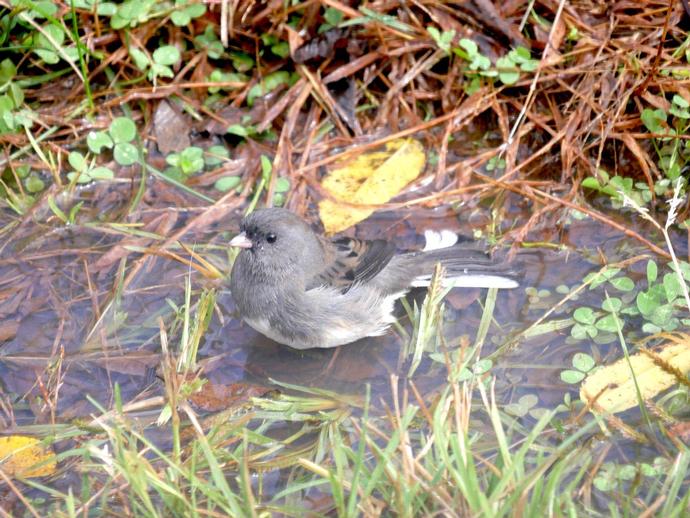
Ben here with the Tuesday edition of #BenInNature!
November 3, 2020
Ben here with the Tuesday edition of #BenInNature! Here we see a dark-eyed junco (Junco hyemalis) enjoying a bath following the torrential downpour we received this past Friday morning. Before we talk about this particular bird, you might be wondering why birds like to bathe in puddles or in the bird bath in your backyard. The answer, surprisingly, is that we aren't exactly sure! However, the prevailing theory is that birds need to bathe their feathers to keep them cleaned and well-maintained. Birds only replace their feathers once or twice a year, and as their feathers get beaten up by regular wear-and-tear -- not to mention mites and sun damage -- they become less effective. Birds need their feathers not only for flight, ...
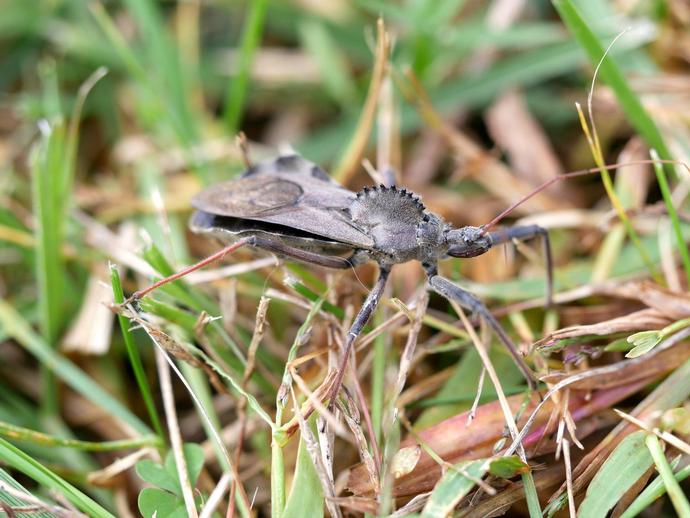
Ben here with the Monday edition of #BenInNature!
November 2, 2020
Ben here with the Monday edition of #BenInNature! Over the last couple of months, I've gotten multiple identification requests from regular #BenInNature readers asking about this unusual-looking insect. Let's kick off the week by looking at the wheel bug (Arilus cristatus), an impressive little predator that should be treated with respect! Wheel bugs belong to the assassin bug family Reduviidae and they're one of the biggest true bugs (members of the order Hemiptera) in North America, growing up to an inch and a half long! The adults are easily identifiable because of the large "wheel" on their pronotum that sort of resembles a gear (or a mohawk, as I always thought when I was a kid). These insects tend to hide themselves ...
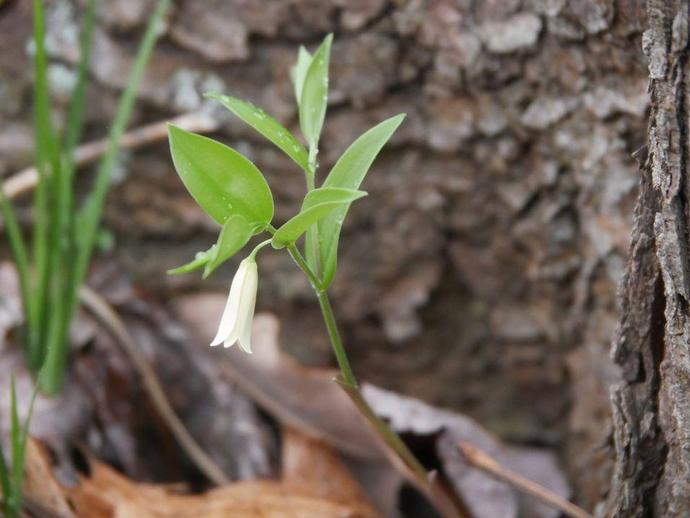
We're reaching into the archives for today's #BenInNature update!
November 1, 2020
We're reaching into the archives for today's #BenInNature update! The following post was originally published on April 10, 2020. This is Uvularia sessilifolia, also known as the sessile bellwort or "wild oats." I've been finding a ton of these in the woods just recently, and they're pretty interesting little wildflowers. The Latin name "Uvularia" means "little grape," which likely refers to the way the flowers of plants in this genus hang down and point to the earth. That's also how the uvula, that little fleshy thing that hangs off the soft palate at the back of the throat, got its name! Uvularia sessilifolia are closely related to the lily family, and they can be found in deciduous forests throughout the eastern and ...
Archives
2026
2025
2024
2023
2022
2021
2020
2019
2018
2017
2016
2015
2014
2013
2012
2011
2010
2009
2008

Please Visit Us Soon
Hours:
Tuesday - Saturday: 10am - 4pm
Sunday: Noon to 4pm (Memorial Day Weekend through Labor Day Weekend only)
Monday: Closed
Admission:
$12 for ages 18-59
$6 for ages 3-17, seniors 60+, and college students
FREE for children under 3, museum members, members of ASTC Passport participating institutions, and EBT cardholders
My 4 year old son loves going to the museum. The exhibits are educational, interactive and kid-friendly.
”

 Hours & Admissions
Hours & Admissions Directions
Directions